|
Displaying items by tag: Restitution
On Tuesday, January 21, France’s Minister of Culture and Communication, Aurélie Filippetti, announced that the country would return three artworks that were looted during World War II to their rightful owners. The works include a 17th century landscape by the Flemish painter Joos de Momper, an 18th century portrait, and an oil on wood Madonna.
The works are among over 2,000 objects that have been held in temporary custody by French museums since the end of World War II. Some critics have spoken out against France, claiming that the country has not been proactive enough in terms of restitution efforts.
Since the end of World War II, France has returned around 80 looted artworks.
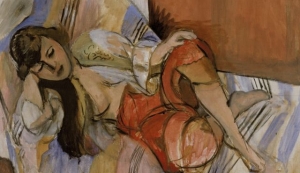
A four-year investigation led by the Netherlands Museum Association revealed that 139 artworks in Dutch public collections may have been stolen or forcibly acquired by the Nazis during World War II, many from Jewish owners. 162 Dutch museums took part in the probe, which targeted artworks acquired between 1933 and 1945. Around a quarter of the institutions were found to house objects with “potentially problematic histor[ies].”
The release of the investigation’s findings coincides with the launch of the website www.musealeverwervingen.nl, which details the objects and their histories in hopes of attaining missing information. Names of the original owners have been attributed to 61 objects and museum officials will make ongoing attempts to contact relatives or heirs of the artworks’ original owners. So far, about a dozen works have been returned to their original owners or their descendants.
According to a study conducted by the United States National Archives in 1997, the Nazis plundered 20% of the art in Europe.
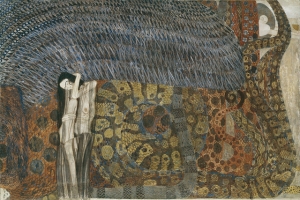
The heirs of Erich Lederer, who fled Vienna when the Nazis annexed Austria in 1938, are demanding the return of Gustav Klimt’s masterpiece Beethoven Frieze (1902). The work was created in honor of the composer’s Ninth Symphony and remains one of Vienna’s Secession building’s biggest attractions.
Lederer’s heirs filed a request with the Ministry for Education, the Art and Culture under a law that regulates the return of Nazi-looted artwork. Their claim was made possible after Austria expanded the law in 2009 to cover instances where previous owners were forced to sell their artworks for unreasonably low values following World War II.
Lederer’s Klimt painting was seized by the Nazis and later returned following World War II. However, Austrian officials would only allow Lederer to export other restituted artworks if he sold Beethoven Frieze for $75,000, half of what Christie’s estimated the painting to be worth.
The Ministry says that it has yet to receive Lederer’s heirs’ filing but that the claim will be examined once it arrives according to the revised restitution law.
The heirs of Paul von Mendelssohn-Bartholdy, a prominent German Jewish banker during the early 20th century, filed a lawsuit against the German state of Bavaria for failing to return a Pablo Picasso (1881-1973) painting that once belonged to their relative. The plaintiffs claim that Mendelssohn-Bartholdy, a relative of the composer Felix Mendelssohn (1809-1847), was forced to sell the painting titled Madame Soler (circa 1903) after ending up destitute at the hands of the Nazi regime.
Mendelssohn’s descendants say that the Bavarian State Paintings Collection, a division of the Bavarian state, acquired Madame Soler in 1964 from New York-based art dealer Justin Thannhauser, who had purchased the work from Mendelssohn-Bartholdy in 1934. The plaintiffs have been attempting to seek restitution from the German state since 2009.
Madame Soler, which is from Picasso’s seminal blue period, is said to be worth approximately $100 million.
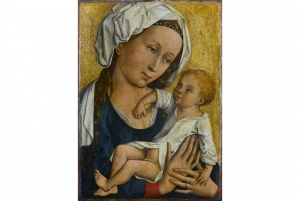
Germany’s Staatsgalerie Stuttgart museum returned a 15th century Renaissance painting stolen by Nazis during World War II to the estate of a Jewish art dealer. The museum acquired Virgin and Child, which is attributed to the Master of Flémalle (1375-1444) who is identified by historians as Robert Campin, in 1948.
The painting once belonged to Max Stern (1904-1987) who lost over 400 paintings to the Nazi regime during a forced sale in 1937. After Jews were banned from selling art in Nazi-occupied Europe, Stern shuttered his Dusseldorf gallery and escaped to London in December of the same year. Before settling in Montreal, Stern sold even more paintings, including Virgin and Child, in order to buy a German exit visa for his mother. Stern went on to purchase the Dominion Gallery of Fine Arts and established himself as one of Canada’s most important art dealers and collectors.
Upon his death in 1987, Stern donated a portion of his estate to Concordia and McGill Universities in Montreal as well as the Hebrew University in Jerusalem. For the past ten years Concordia has been working to recover the hundreds of paintings Stern lost at the hands of the Nazis. The initiative, known as the Max Stern Art Restitution Project, has facilitated the return of 9 works originally belonging to Stern; Virgin and Child is the 10th and the only work to be returned from a German museum thus far.
A ceremony was held on Tuesday, March 5, 2013 at the Canadian Embassy in Berlin to celebrate the painting’s return.
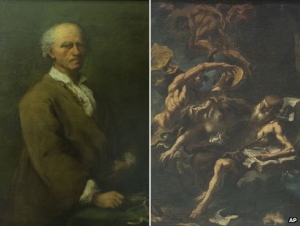
France will return seven paintings stolen from their Jewish owners by Nazis during World War II, part of an ongoing effort to give back hundreds of plundered works that still hang in French institutions including the Louvre. The seven paintings were all stolen or sold under duress as their owners fled Europe during the Nazi occupation. The works were to be displayed in Adolf Hitler’s art gallery, which he planned to build in his birthplace in Austria but never came to fruition.
At the end of World War II, with most of Europe in shambles, many artworks were left unclaimed and thousands of French-owned works found homes in the France’s various museums. Government efforts to return these works gained steam last year at the urging of the owners’ families. The French government believes that there are approximately 2,000 Nazi looted artworks in state institutions; inaccurate archiving and the challenge of properly identifying paintings has made the restitution process a long one.
Six of the seven works to be returned were owned by Richard Neumann, an Austrian Jew who sold his remarkable art collection for a fraction of its value in order to flee Europe. His collection included works by Alessandro Longhi (1733-1831), Sebastiano Ricci (1659-1734), and Gaspare Diziani (1689-1767). The paintings were ultimately placed in the Louvre, the Museum of Modern Art of Saint-Etienne, the Agen Fine Arts Museum, and the Tours Fine Art Museum after the war.
The other painting to be returned is Pieter Jansz Van Asch’s (1603-1678) The Halt, which was stolen by the Gestapo in Prague in 1939 from Josef Wiener, a Jewish banker who was deported and later died in a concentration camp. The Dutch masterpiece hung in the Louvre for years until Van Asch’s family tracked it down online in the mid-2000s. The French Prime Minister, Francois Fillon, approved the return of the painting to the family last year.
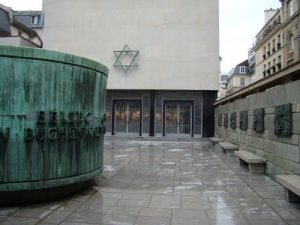
French senator Corinne Bouchoux is urging French museum officials to take closer looks at their prized holdings as many public art collections contain works looted by Nazis during World War II. Bouchoux has led an investigative committee devoted to uncovering Nazi-looted artwork in France, which prompted her to ask museums to be more thorough in their provenance research.
Bouchoux revealed that out of the 100,000 artworks stolen from Jewish families in France and Belgium, approximately 2,000 of those works were still present in French museums. Many of these museums were designated “national museums of recovery,” which allowed the institutions to keep the works as long as they did not become property of the state and if identified, the rightful owners could reclaim them.
Bouchoux wrote her doctoral thesis, which has just been published as a book, on Nazi-looted art in France and has suggested nine proposals to direct the stolen works back to their rightful owners or offer restitution for them.
In line with Bouchoux’s efforts, the Shoal Memorial in Paris presents the exhibition Looting of the Jews: A State Policy (1940-44), which grants visitors a glimpse of the goods, including artworks, that originally belonged to Jews in France. The show is on view through September 29, 2013.
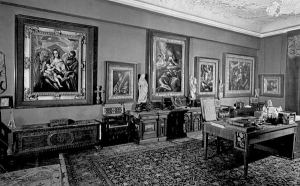
On January 23, 2013, a three-judge federal appellate court in California heard arguments from the heirs and relatives of a prominent Hungarian art collector. The lead plaintiff, David de Csepel, is the great-grandson of Jewish banker Baron Mór Lipót Herzog whose legendary art collection once included works by El Greco (1541-1614), Anthony van Dyck (1599-1641), Diego Velázquez (1599-1660), Pierre-Auguste Renoir (1841-1919), and Claude Monet (1840-1926).
The case, which could be the last major art restitution case relating to the Holocaust, involves 40 artworks valued at $100 million that were seized by Nazis during World War II. Csepel argued that Hungarian courts acted unjustly as they have never returned the stolen paintings nor paid restitution to Herzog’s relatives. In fact, a number of paintings once belonging to Herzog remain in the collections of Hungarian museums.
The lawsuit is attempting to use U.S. courts to press charges against the Hungarian government, three of the country’s museums, and a university. However, the Hungarian government’s lawyers argue that U.S. courts have no jurisdiction on foreign soil, pushing to have the case played out in Hungarian courts or the International Court of Justice. The plantiff’s attorney, Michael Shuster, claims that the case is relevant for U.S. courts because most of the living heirs involved in the case are U.S. citizens and that Hungarian courts can be problematic.
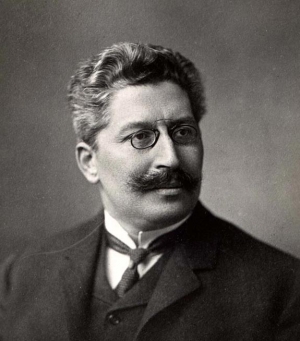
Thomas Hemer journeyed from Nevada to Leipzig, the city where he was born 88 years ago, to fight for the legacy of his grandfather, an Egyptologist of Jewish origin forced to leave Germany after the Nazis came to power.
In 1937, Georg Steindorff sold his collection of ancient artifacts to the department of Leipzig University that he led. Hemer, his grandson, wants to stop the Conference on Jewish Material Claims Against Germany from taking them from the university museum, after a Berlin court ruled on May 26 that the sale was conducted under duress and thus invalid.
The 16-year legal battle pitted Leipzig University and Hemer against the Claims Conference, which filed a claim for the collection after German unification in 1990. In a restitution case that confounds conventions, the Claims Conference is now legal owner of the antiquities, overriding the wishes of the heir. Hemer, who served as a witness, said he’s “astonished.”
Losing the collection “would destroy an institute that my grandfather cherished,” Hemer said in an interview at the museum in Leipzig. Though alert and fit for his age, he walks with a stick and wears a hearing aid. “My grandfather was the institute,” Hemer said. “He was this museum.”
Steindorff led archaeological excursions to Egypt between 1903 and 1931. He complemented his own finds with objects that he purchased for his teaching practice and integrated into the university collection.
Clay, Ceramics
The 163 antiquities include a 4,000-year-old Nagada bowl, ancient clay figures, early Islamic ceramics and Greek and Roman objects. He sold those acquisitions to the university for 8,000 Reichsmarks (about $3,200 at the time) in 1937 and they have been there ever since, in the Egyptology museum he founded, known since 2008 as the Egyptian Museum Georg Steindorff, according to the court.
Before the sale, Steindorff had calculated the value of the individual objects at 10,260 Reichsmarks. The court said the discrepancy is a sign that the sale was not voluntary.
“In the case of sales by those persecuted during the Nazi era there is a legal assumption that these were a result of persecution and therefore liable for compensation,” the administrative court said in a press release after the ruling.
“There is some evidence that, before 1933, Steindorff intended to give his collection to the university,” the court said. “Yet in 1937 he wanted to sell it. Therefore we can’t rule out that the sale was under duress.”
Steindorff remained in Germany until March 1939. He managed to obtain a passport through connections and left for the U.S. via Bremen. He died in 1951 at the age of 90.
‘Measure of Justice’
The Claims Conference, which describes its mission as “securing a measure of justice for Jewish victims of Nazi persecution,” also has a legal remit to recover property confiscated from Jews before World War II in eastern Germany -- in cases where no heirs have stepped forward to stake a claim. According to its website, the group has used more than $1 billion of revenue from such claims to fund social, educational and research programs.
“No Steindorff heirs have come to us,” Gregory Schneider, the executive vice president of the Jewish Claims Conference, said by telephone from New York. “We didn’t know about the grandson until now. That is something we can work out separately. What is important here is that a German court has recognized that this is a forced sale.”
|
|
|
|
|